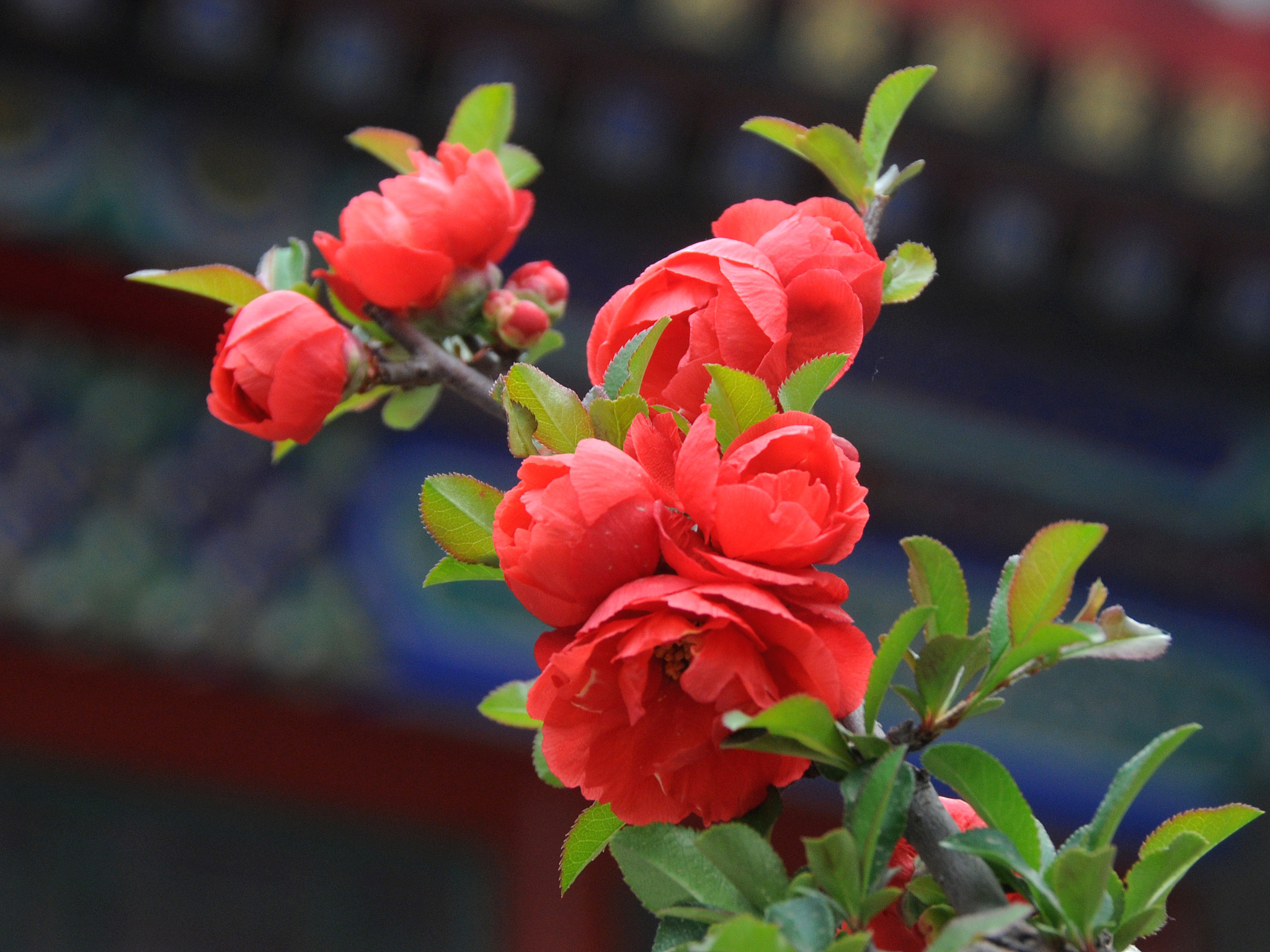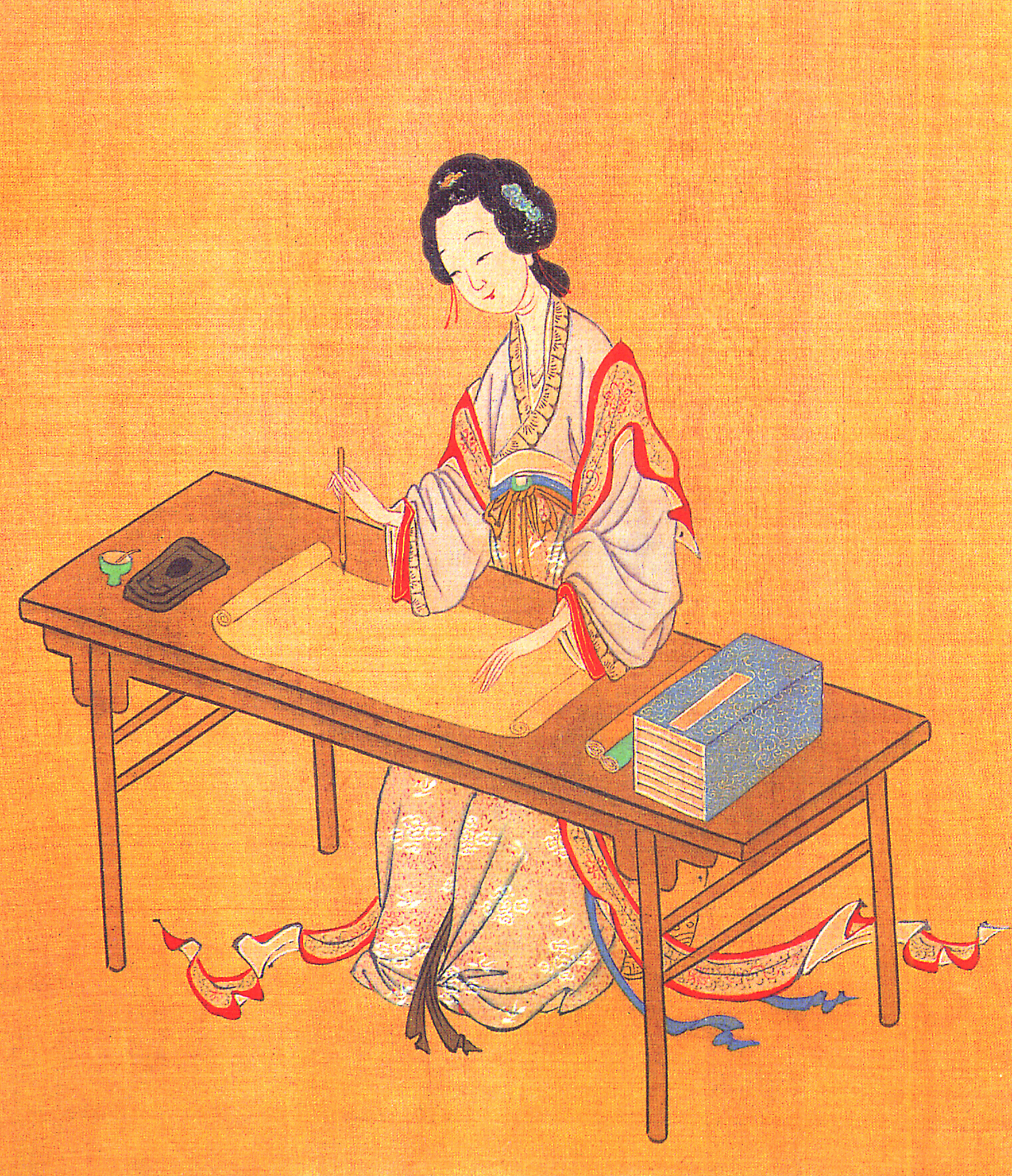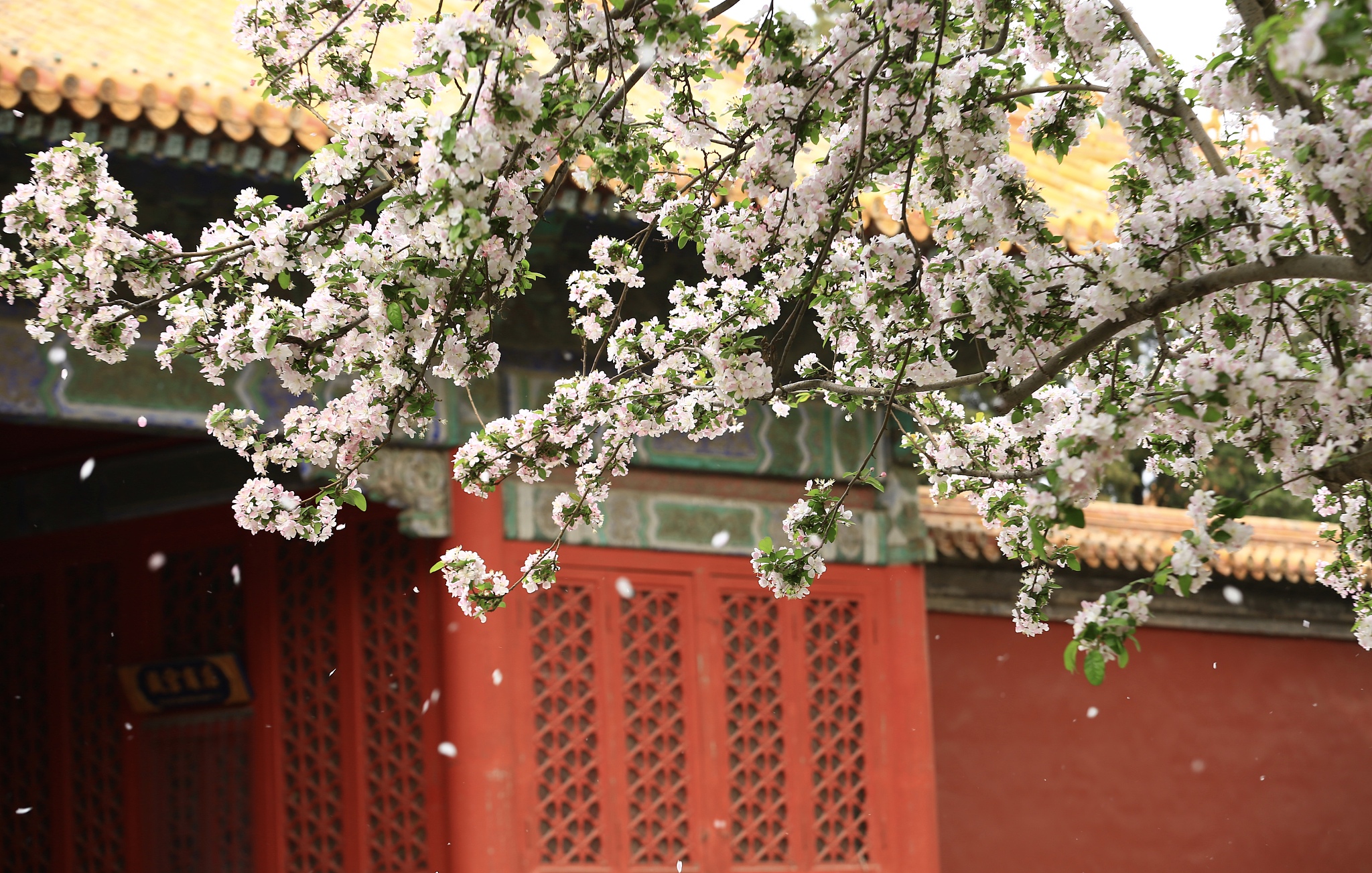Pink and red flowers, burgundy walls and ground strewn with blood-colored petals. A colorful chaos has hit the Forbidden City as the majestic begonias bloom in the imperial palace.
The stunning visuals have been dubbed a "rain of rouge" on Chinese media with shutterbugs and selfie savants thronging the halls, grounds and alleys of the Beijing landmark for a close-up of the blossoms.
The begonia is an endemic plant to China, growing on plains and mountains at altitudes ranging between 50 to 2,000 meters.
The flower has long been synonymous with riches and honor, and so has taken up residence in royal gardens in ancient times.
At the Forbidden City, the most famous begonias are the pinkish variety guarding the front of the Wenhua Hall.

The stunning floral visuals at the Forbidden City in Beijing have been dubbed a "rain of rouge" on Chinese social media. /CFP
The stunning floral visuals at the Forbidden City in Beijing have been dubbed a "rain of rouge" on Chinese social media. /CFP
The Wenhua Hall was built in the 18th year into the rule of the Yongle Emperor (1402-1424) during the Ming Dynasty. Later, people in the palace widely planted begonias along the path from Wenhua Hall to Donghua Gate, creating a tunnel of flowers that has brightened the scenery every spring since.
But the earliest records of planting begonias in China can be traced back to the pre-Qin Dynasty (1644-1912) period.
In the Han Dynasty (202-220), begonias were an integral part of the garden art. In the Tang Dynasty (618-907), the cultivation techniques of the flower improved and their planting area expanded. During the Song Dynasty (960-1279), adoration reached its apogee with the begonia lauded as the "God of flowers."
Legend has it that begonias grew out of the tears of a lovesick woman who spent her lifetime waiting for her sweetheart, crying in pain over their separation and eventually dying without a reunion. The myth could explain why the literature surrounding the begonias exhibits elements of bitter love, and a large body of poems about the flower is tainted with sadness.

Portrait of Chinese poet Li Qingzhao. /CFP
Portrait of Chinese poet Li Qingzhao. /CFP
Li Qingzhao, a Song Dynasty poet and essayist, described her mourning of the fleeting spring in "Like a Dream":
Last night the wind blew hard and rain was fine;
Sound sleep did not dispel the aftertaste of wine.
I ask the maid rolling up the screen.
"The same crab-apple tree," she says, "is seen."
"But don't you know,
O, don't you know.
The red should languish and the green must grow?

Pink begonias in the Forbidden City. /CFP
Pink begonias in the Forbidden City. /CFP
The bitter feelings attached to begonias have not stopped people from admiring their beauty during springtime.
The Xifu begonias in the Forbidden City and other royal gardens in Beijing enter the blooming season in mid-April every year.
The Former Residence of Song Qingling and Zhongshan Park are good spots to appreciate the begonias during this time of the year.
(Top image designer: Yin Yating)

